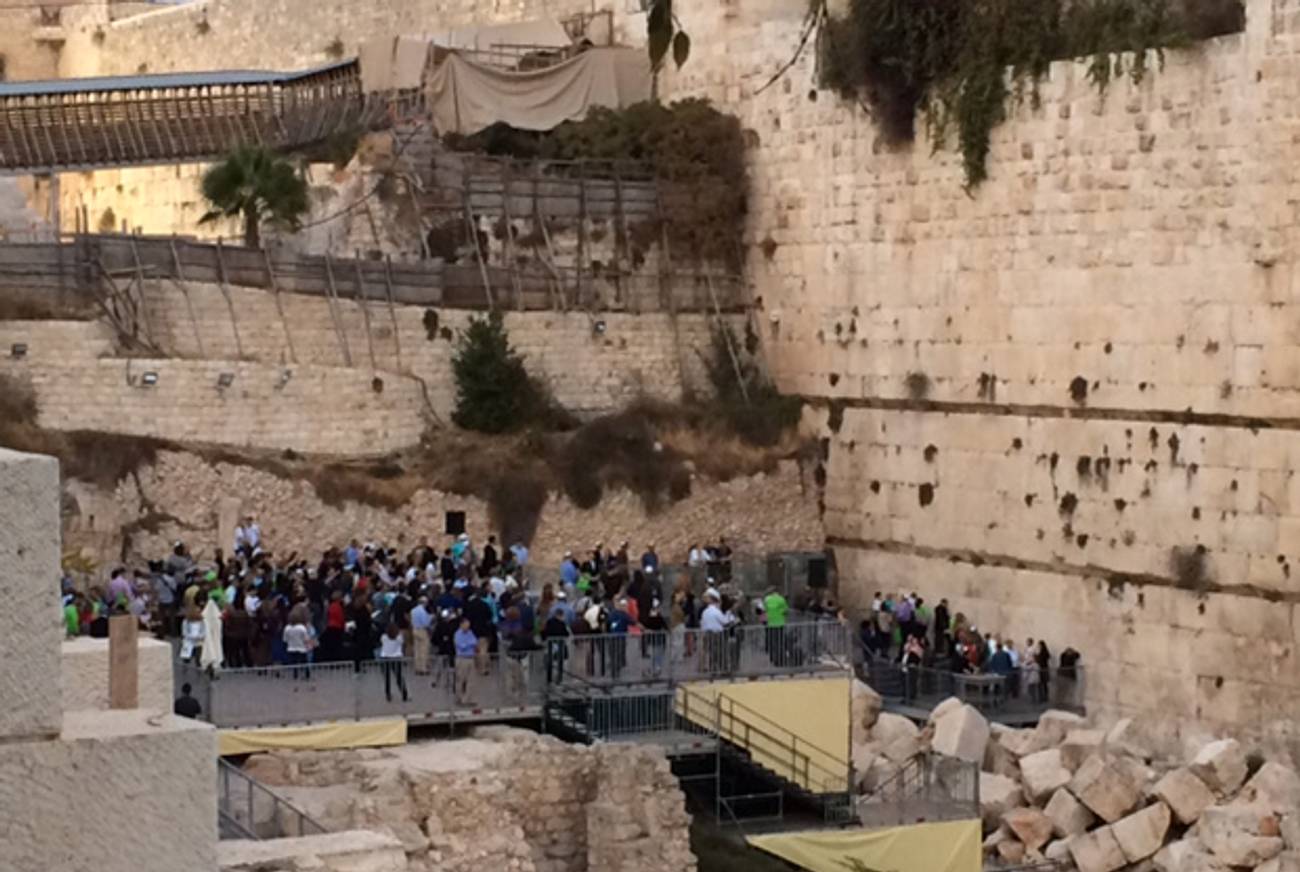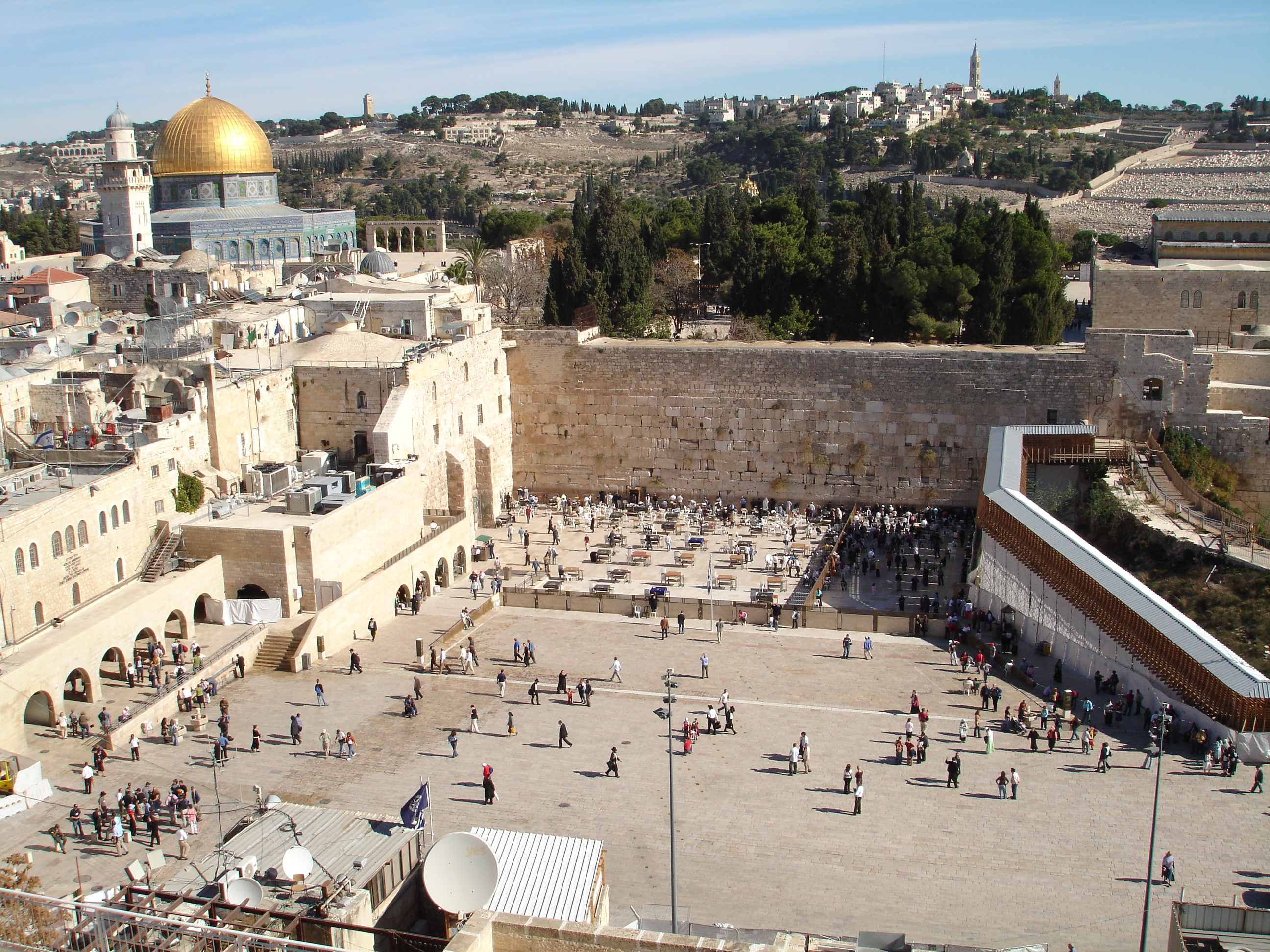Jerusalem: Witnessing Faith at the Western Wall

When you visit Jerusalem, there are a significant amount of things that you can do and see. But the Western Wall is one place you should add to your itinerary. This wall carries immense religious and historical significance for both Jews and non-Jews.
The significance of the Western Wall
The Western Wall is considered the holiest site where Jews are allowed to pray. It is the last remaining section of the Second Temple that the Romans destroyed in 70 CE. For centuries, the Western Wall has been a pilgrimage site, attracting Jewish people from around the world who come to pray and place written prayers between the crevices of the wall.
However, the Western Wall is not just an important site for Jewish people. The wall in the Old City of Jerusalem also carries a historical and cultural significance. Many tourists visit this site to witness and learn about its rich history.
Witnessing faith at the Western Wall
As you stand in front of the Western Wall, you will witness an incredible display of faith and devotion. It is a humbling experience to see people praying with intense emotion and reverence towards this sacred site. You will see people of all ages and backgrounds, each with a unique story and connection to the wall.
It is also important to note that while visitors are welcome to observe people praying, respecting the customs and traditions of those present is essential. Additionally, visitors should dress modestly and avoid inappropriate behaviour at this holy site.
Overall, visiting the Western Wall in Jerusalem is an unforgettable experience you should not miss. It's a place that carries immense significance for so many people, and witnessing it firsthand is truly a unique experience.

History of the Western Wall
The Western Wall is the last remaining section of the Second Temple, which the Romans destroyed in 70 CE. The wall served as a retaining wall for the Temple Mount, where the temple was located. It is believed to have been built during the reign of King Herod the Great in the first century BCE.
Over the centuries, the Western Wall has been the site of many significant events. During the Ottoman period, Jews were not allowed to pray at the wall openly, so they would go at night or pray from a distance. The wall became a pilgrimage site in the early 20th century, and during Israel's War of Independence in 1948, the Old City of Jerusalem became divided, and access to the Western Wall was cut off. The wall was finally reopened after Israel's victory in the Six-Day War in 1967.
Overall, visiting the Western Wall is a must-do for anyone travelling to Jerusalem. Whether you're religious or not, the wall is an important cultural and historical site that offers a unique and unforgettable experience. Plan your trip today.

Getting to the Western Wall
The Western Wall is an incredible place in Jerusalem, a must-see attraction for most tourists. Here are some things you should know before you go.
Transportation options
The Western Wall is located in the Old City of Jerusalem, so getting there on foot is easy. You can also take a taxi or bus to the entrance of the Old City and then walk the rest of the way. If you’re staying in the city centre, the entrance is about a 20-minute walk away. If you prefer, you can use a private tour service or hire a guide who will easily get you there.
Dress code and protocol
It's important to dress modestly when visiting the Western Wall. For men, this means wearing long pants; for women, it means dressing modestly and covering your shoulders. When you arrive at the wall, you'll be asked to go through a security check involving metal detectors and bag checks. Once you're inside, respect those who are praying and don't take photos without permission. You can also write a note and place it on the wall, which is considered a spiritual practice by many.
Overall, visiting the Western Wall is a beautiful and moving experience that can be enjoyed by everyone, regardless of their religious beliefs. Just respect the customs and traditions of those who visit, and you'll have an unforgettable time.

The Western Wall Plaza
Are you planning a trip to Jerusalem? If so, visiting the Western Wall is a must-do on your list of attractions. Once you arrive, you'll find yourself standing at the Western Wall plaza, an iconic landmark rich in history and tradition. Here are some things you should know about the plaza and what to expect.
Layout of the plaza
The Western Wall Plaza is a large open area that surrounds the Western Wall, which is the central focus of the plaza. The plaza is divided into two sections for men and women, so follow the signs. The men's section is on the left side of the Western Wall, and the women's section is on the right.
You'll notice several areas where you can sit or stand to pray when you arrive. These areas are marked with signs indicating which direction to face when praying. The Western Wall is accessible 24 hours a day, seven days a week so that you can visit any time convenient.
Activities around the Western Wall
There are several activities you can enjoy around the Western Wall plaza, such as:
- Writing a note: One of the customs at the Western Wall is to write a note and place it on the wall. You can buy paper and pens at the entrance to the plaza or bring your own.
- Taking a tour: If you want to learn more about the history and significance of the Western Wall, you can take a guided tour with a knowledgeable guide.
- Attending a ceremony: On special occasions, such as holidays or bar/bat mitzvahs, ceremonies may occur at the Western Wall. You're welcome to attend and observe.
Overall, the Western Wall Plaza is a unique and special place that should not be missed when visiting Jerusalem. Remember to respect the customs and traditions of those who visit, and you'll have a wonderful time experiencing the spiritual significance of the Western Wall.

Praying at the Western Wall
If you are planning to visit Jerusalem, make sure to put a visit to the Western Wall Plaza on your list. It is a breathtaking location with cultural and historical significance worth exploring. Here's what you need to know about praying at the Western Wall.
Customs and practices
When you arrive at the Western Wall Plaza, you’ll find smaller areas designated for either men or women to pray. It is important to dress modestly and cover your head when entering such areas. When visiting the Western Wall, one of the customs is to write a note and place it on the wall. So, bring a paper and pen with you or purchase one at the plaza entrance.
Prayer times and schedules
The Western Wall is open 24/7 for prayers, but certain times are more popular. On Fridays, people flock to the Western Wall before Shabbat. On Saturdays, there's a prayer service held in the afternoon by the Western Wall Tunnels. While visiting, you can join one of their scheduled prayer services among other worshipers or pray silently in one of the wider, smaller areas.
Praying at the Western Wall Plaza is an incredible experience not to be missed when visiting Jerusalem. Don't forget to respect the customs and traditions of those also praying.

Women at the Western Wall
Women's section and customs
If you're a woman planning to pray at the Western Wall, note that there is a separate designated area for women on the southern side of the plaza. Make sure to dress modestly, cover your head, and bring a pen and paper if you plan on writing a note to place on the wall.
Women of the Wall organization
The Women of the Wall organization advocates for women's rights to pray, read from the Torah, and wear prayer shawls at the Western Wall. While some may face opposition, the organization provides a safe and inclusive space for all women to come and pray at the holy site.
Visiting and praying at the Western Wall is an extraordinary experience that Jerusalem should not miss. Respect customs and traditions, dress appropriately, and take in this magnificent place's cultural and historical significance.
Bar/Bat Mitzvah at the Western Wall
Celebrating a coming-of-age
A Bar/Bat Mitzvah is a significant milestone in Judaism, and what could be more special than celebrating at the Western Wall? It's a perfect way to embrace your faith, connect with your heritage, and stand in awe of this incredible holy site.
Planning a Bar/Bat Mitzvah at the Western Wall
Once you've decided to hold your celebration at the Western Wall, there are a few things to consider. First, it's essential to get in touch with the relevant authorities to ensure you have the necessary permissions. You'll also want to work with a planner who is familiar with the site and can advise you on all the logistical details. Finally, remember to cherish every moment of this once-in-a-lifetime experience!

Exploring the Western Wall Tunnels
If you're looking for a unique and fascinating experience during your trip to Jerusalem, don't miss out on exploring the Western Wall Tunnels. Here are some things you should know before you go:
Accessing the tunnels
You can book a tour of the Western Wall Tunnels online or at the entrance to the Western Wall Plaza. The tours are led by knowledgeable guides who will take you through the tunnels, explaining the history and significance of each area. It's important to note that the tunnels can be narrow and dimly lit, so wear comfortable shoes and be prepared to walk for about an hour.
Discoveries and history in the tunnels
The Western Wall Tunnels offer a glimpse into the layers of history built around the Western Wall over the centuries. Along the way, you'll see discoveries such as an ancient water aqueduct, an underground marketplace, and ritual baths from the Second Temple period. Perhaps most astonishing is the vast network of underground tunnels that extends underneath the Muslim Quarter of the Old City.
Visiting the Western Wall Tunnels is an unforgettable experience that will deepen your understanding of Jerusalem's storied past. Don't miss this incredible opportunity to connect with history and culture.

Tips for visiting the Western Wall
- Wear comfortable shoes, as there will be a significant amount of walking involved.
- Bring water, as it can get quite warm and humid in some areas of the tunnels.
- Be respectful and dress appropriately when visiting a holy site.
- Listen closely to your tour guide, as they will provide valuable insight into the history and significance of the tunnels.
Visiting the Western Wall Tunnels is truly a one-of-a-kind experience that should not be missed while in Jerusalem. Book your tour today and discover the incredible history and discoveries that await you below the surface.
